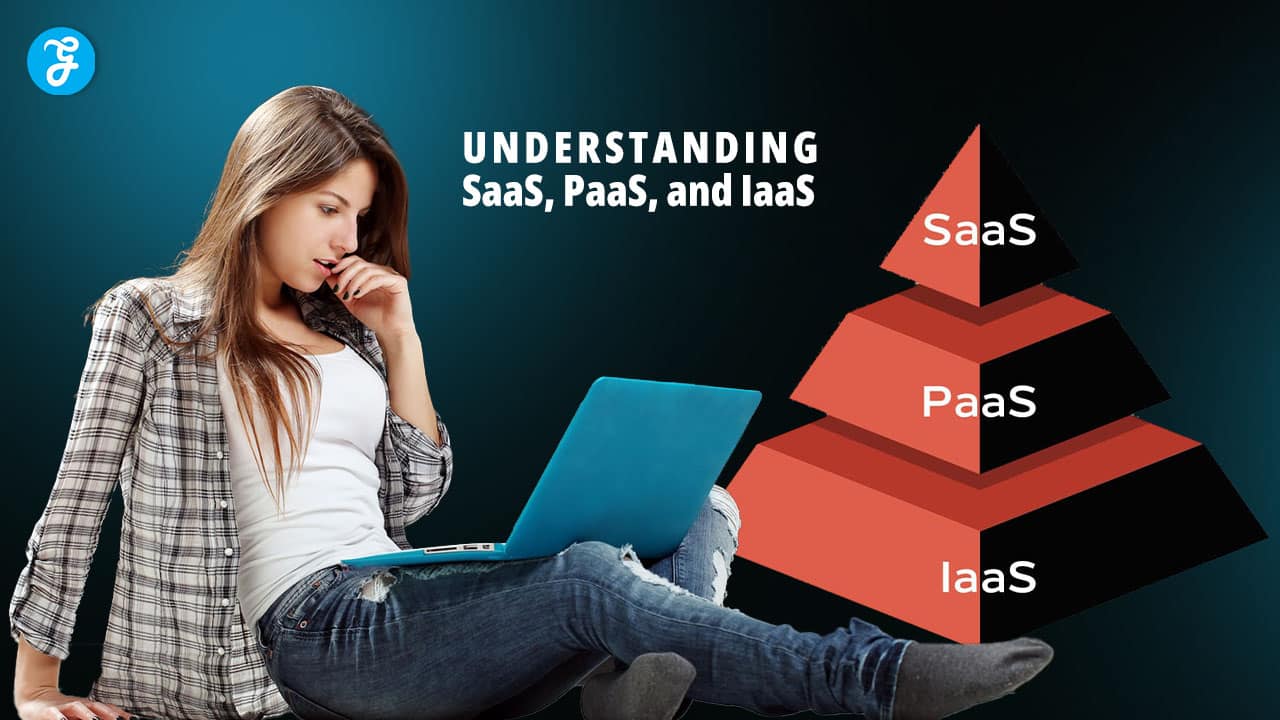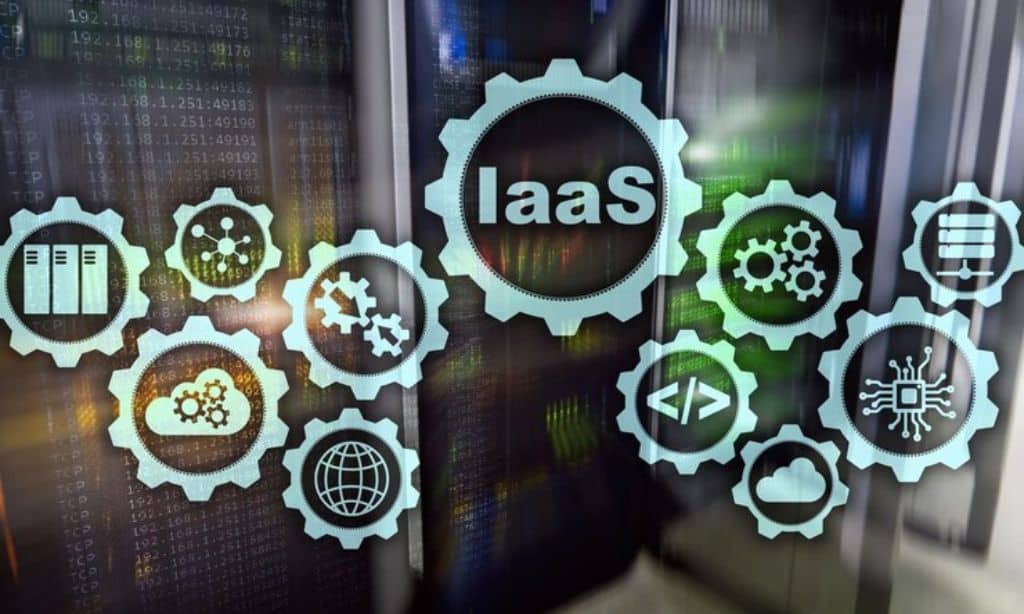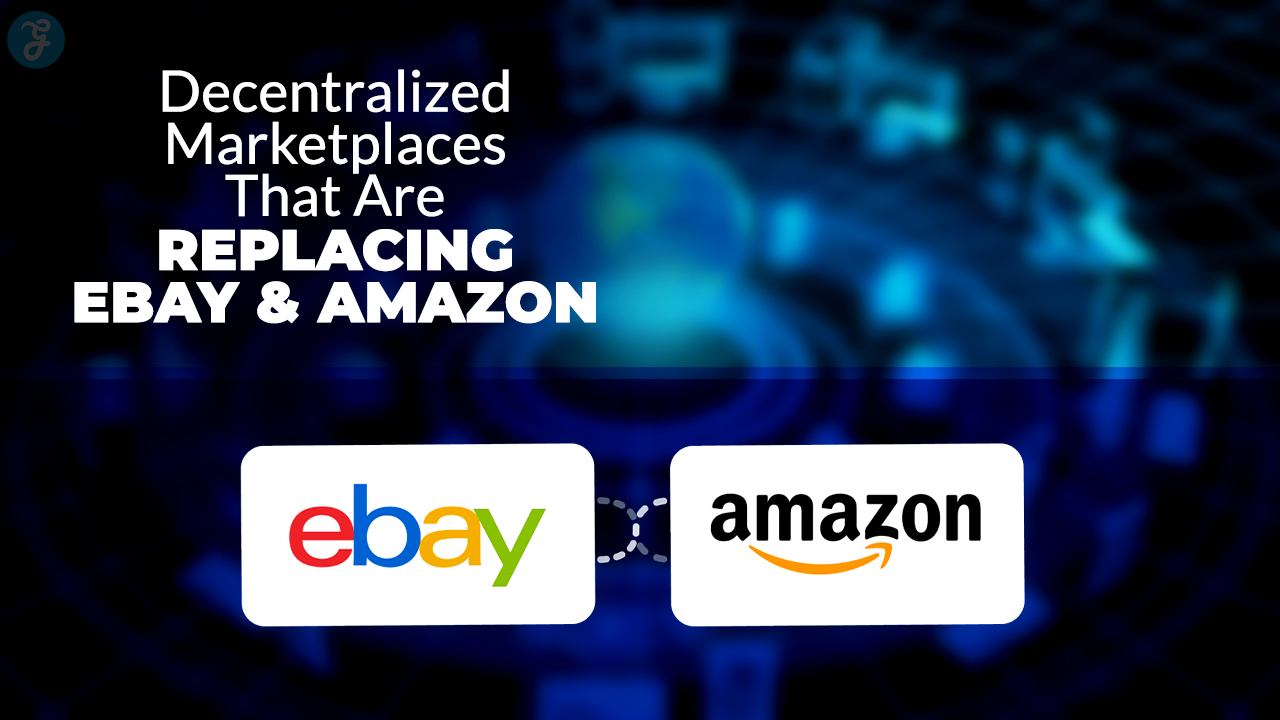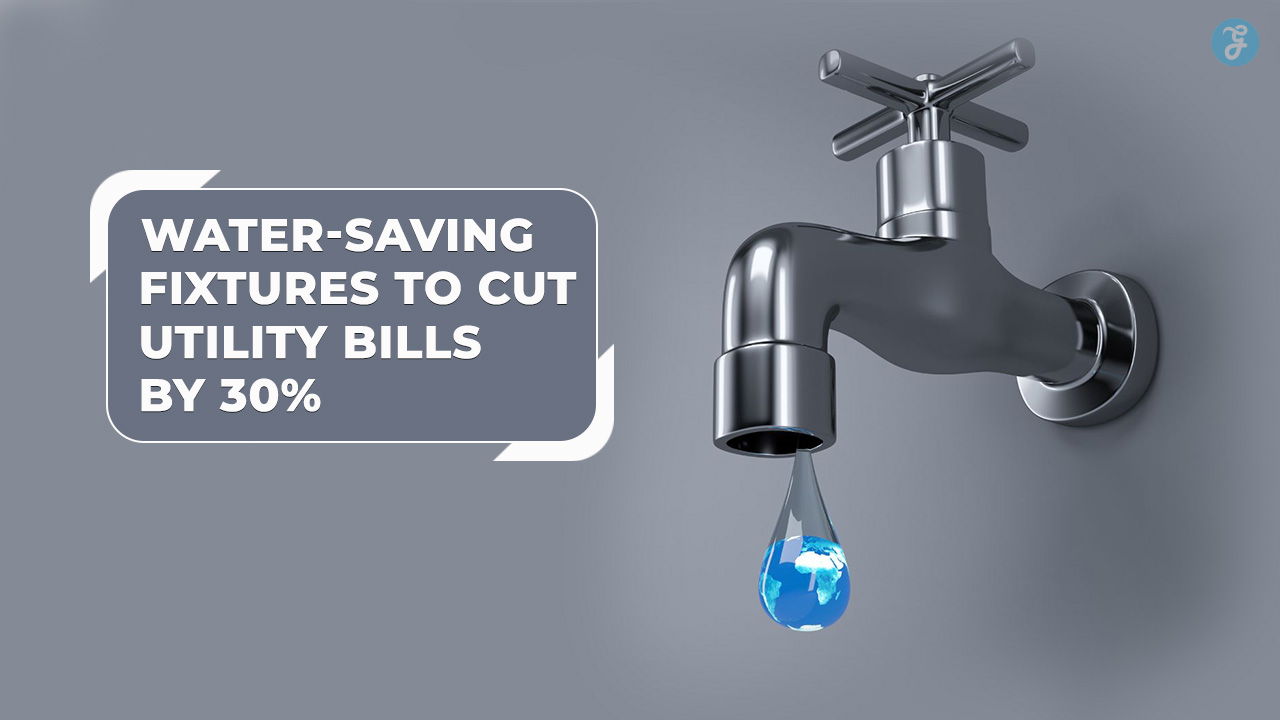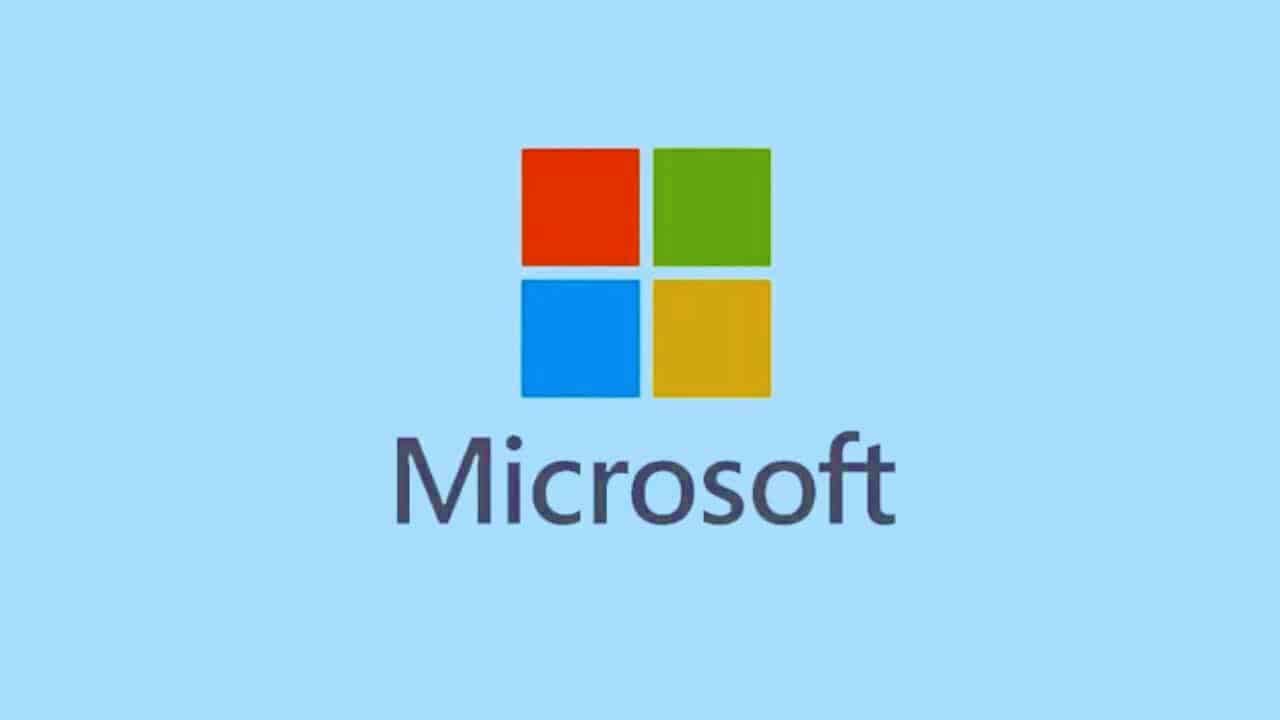In today’s rapidly evolving digital landscape, cloud computing has become indispensable to modern business operations. It offers unparalleled flexibility, scalability, and cost-effectiveness that traditional on-premises systems simply can’t match.
However, navigating the world of cloud services can be complex, especially when it comes to choosing between the three main types of cloud service models: Software as a Service (SaaS), Platform as a Service (PaaS), and Infrastructure as a Service (IaaS).
Each of these models serves different needs and comes with its own set of advantages and considerations. Whether you’re a small startup looking to minimize IT overhead, a growing company needing flexible development platforms, or a large enterprise requiring robust infrastructure control, understanding these models is critical to making informed decisions about your cloud strategy.
This comprehensive guide aims to demystify these cloud service models, helping you understand what each offers, their pros and cons, and how to choose the right one for your business needs.
We’ll explore real-world examples, discuss emerging trends, and provide practical advice to help you navigate your cloud journey.
Let’s dive deep into the world of cloud service models and explore how SaaS, PaaS, and IaaS can transform the way you do business in the cloud.
Understanding Cloud Computing
Before we delve into the specific cloud service models, it’s crucial to have a solid understanding of cloud computing and why it has become such a game-changer in the tech world.
What is Cloud Computing?
At its core, cloud computing is delivering computing services over the internet. These services include a wide range of resources such as servers, storage, databases, networking, software, analytics, and intelligence.
Instead of owning and maintaining physical data centers and servers, individuals and organizations can access these resources as needed from a cloud provider.
This shift from traditional, on-premises IT infrastructure to cloud-based services has revolutionized how businesses operate, innovate, and scale.
It’s not just about moving your existing operations to the cloud; it’s about reimagining your business processes and capabilities in a cloud-first world.
Key Benefits of Cloud Computing
1. Cost Efficiency:
Cloud computing eliminates the capital expense of buying hardware and software and setting up and running on-site data centers. It shifts IT spending from capital expenditure (CapEx) to operational expenditure (OpEx), which can be more flexible and predictable.
2. Scalability:
Cloud resources can be scaled quickly to meet changing needs. This elasticity is particularly valuable for businesses with fluctuating or growing demands.
3. Performance:
The most significant cloud computing services run on a worldwide network of secure data centers regularly upgraded to the latest fast and efficient computing hardware generation. This offers several benefits over a single corporate data center, including reduced application network latency and more significant economies of scale.
4. Reliability:
Cloud computing makes data backup, disaster recovery, and business continuity more accessible and less expensive because data can be mirrored at multiple redundant sites on the cloud provider’s network.
5. Security:
Many cloud providers offer a broad set of policies, technologies, and controls that strengthen your security posture, helping protect your data, apps, and infrastructure from potential threats.
6. Global Scale:
The benefits of cloud computing services include the ability to scale elastically. In cloud speak, that means delivering the right amount of IT resources—for example, more or less computing power, storage, and bandwidth—when needed and from the right geographic location.
7. Speed and Agility:
Most cloud computing services are self-service and on-demand, so even vast computing resources can be provisioned in minutes, typically with just a few mouse clicks, giving businesses much flexibility and taking the pressure off capacity planning.
8. Productivity:
On-site data centers typically require a lot of “racking and stacking”—hardware setup, software patching, and other time-consuming IT management chores. Cloud computing removes the need for many tasks, so IT teams can spend time achieving more important business goals.
9. Innovation:
The cloud gives you easy access to many technologies to innovate faster and build nearly anything you can imagine. You can quickly spin up resources as needed–from infrastructure services, like computing, storage, and databases, to the Internet of Things, machine learning, data lakes, analytics, and much more.
Types of Cloud Deployments
Before we dive into the specific service models, it’s worth noting that there are different types of cloud deployments:
1. Public Cloud:
The most common cloud service is provided in a virtualized environment, constructed using pooled shared physical resources, and accessible over a public network like the Internet.
2. Private Cloud:
This type of cloud computing delivers similar advantages to public cloud, including scalability and self-service, but through a proprietary architecture. Unlike public clouds, which provide services to multiple organizations, a private cloud is dedicated to the needs and goals of a single organization.
3. Hybrid Cloud:
As the name suggests, hybrid clouds combine public and private clouds bound by technology that allows data and applications to be shared. This gives businesses greater flexibility and more deployment options.
4. Multi-Cloud:
A step beyond hybrid cloud, multi-cloud refers to using multiple cloud computing and storage services in a single heterogeneous architecture. This can also refer to distributing cloud assets, software, applications, etc., across several cloud-hosting environments.
Now that we have a solid foundation in cloud computing let’s explore each of the three main cloud service models in detail.
1. Software as a Service (SaaS)
Software as a Service, or SaaS, is the most commonly used and widely understood cloud service model. It delivers software applications over the internet on a subscription basis, eliminating users needing to install and run the application on their computers or infrastructure.
What is SaaS?
SaaS is a software delivery method where a vendor hosts applications and makes them available to customers over the Internet.
Instead of installing and maintaining the software, you simply access it via a web browser, freeing yourself from complex software and hardware management.
This model has become so prevalent that you likely use several SaaS applications daily without realizing it.
Key Features of SaaS
1. Web Access:
SaaS applications are accessed through a web browser, eliminating the need for downloads or installations. You can access the software from any device with an internet connection.
2. Centralized Management:
The software is managed centrally, facilitating automatic updates and patch management. Users always have access to the latest software version without manually updating it.
3. Multi-Tenant Architecture:
A single version of the application, with a single configuration, is used for all customers. This allows providers to scale their service efficiently.
4. Customization:
Many SaaS apps offer customization options to meet specific business needs, though these are typically less extensive than on-premises software.
5. Pay-as-you-go Pricing:
Most SaaS offerings follow a subscription model, often with tiered pricing based on usage levels or features.
6. Seamless Integration:
Many SaaS applications offer APIs that allow integration with other software, enhancing functionality and data sharing between different systems.
Advantages of SaaS
1. Cost-Effective:
SaaS eliminates the upfront cost of purchase and installation and ongoing costs like maintenance and upgrades. This can be particularly beneficial for small businesses and startups.
2. Scalability:
Users can quickly scale their usage up or down based on their needs. This flexibility is precious for growing businesses or those with fluctuating demands.
3. Automatic Updates:
The provider manages all updates and upgrades, eliminating users needing to install and download patches. This ensures you’re always using the latest version of the software.
4. Accessibility:
SaaS applications can be accessed from any internet-connected device, promoting collaboration and flexible work arrangements. This has become increasingly important in the era of remote work.
5. Quick Setup:
SaaS solutions can be deployed quickly, often in hours or days, rather than the weeks or months to deploy traditional software.
6. Reduced IT Burden:
With the provider handling maintenance, upgrades, and troubleshooting, your IT team can focus on more strategic initiatives.
7. Try Before You Buy:
Many SaaS providers offer free trials, allowing you to test the software before committing to a purchase.
Disadvantages of SaaS
1. Limited Control:
Users have limited control over features and functionality. A SaaS solution might not be best if you need highly specialized features.
2. Internet Dependency:
SaaS applications require a stable internet connection. If your internet goes down, you may lose access to critical software.
3. Data Security Concerns:
Storing sensitive data on external servers may raise security and compliance issues for some organizations, particularly those in highly regulated industries.
4. Performance Issues:
The performance of SaaS applications can be affected by internet speed and the provider’s server performance. This can lead to slower operation compared to on-premises software.
5. Data Portability:
Moving from one SaaS provider to another can be challenging, as your data may be proprietary.
6. Customization Limitations:
While many SaaS applications offer some level of customization, it’s generally not as extensive as possible with on-premises software.
Common SaaS Examples
1. Customer Relationship Management (CRM):
- Salesforce: The world’s leading CRM platform, offering cloud-based applications for sales, service, marketing, and more.
- HubSpot: An inbound marketing, sales, and service platform that helps companies attract visitors, convert leads, and close customers.
2. Productivity Suites:
- Google Workspace (formerly G Suite): Includes Gmail, Docs, Drive, Calendar, Meet, and more for seamless collaboration.
- Microsoft 365 (formerly Office 365): Offers cloud-based versions of Microsoft’s popular productivity applications like Word, Excel, and PowerPoint, along with services like OneDrive and Teams.
3. Project Management:
- Trello: A visual collaboration tool that creates a shared perspective on any project.
- Asana: Helps teams organize, track, and manage their work.
4. Human Resources:
- Workday: Provides enterprise cloud applications for financial management, HR, planning, and analytics.
- BambooHR: An all-in-one HR software solution for small and medium-sized businesses.
5. Accounting:
- QuickBooks Online: Cloud-based accounting software for small and medium-sized businesses.
- Xero: Online accounting software for small businesses, accountants, and bookkeepers.
6. Communication and Collaboration:
- Slack: A channel-based messaging platform for business communication.
- Zoom: A video conferencing tool that has become ubiquitous during the rise of remote work.
7. E-commerce:
- Shopify: A platform for businesses to set up an online store and sell products.
- BigCommerce: Provides e-commerce tools to build and scale an online business.
8. Design and Creativity:
- Adobe Creative Cloud: Offers cloud-based versions of Adobe’s popular creative software like Photoshop, Illustrator, and InDesign.
- Canva: A graphic design platform used to create social media graphics, presentations, posters, and other visual content.
When to Choose SaaS
SaaS is ideal for:
- Startups and Small Businesses: SaaS allows these organizations to access sophisticated software without significant upfront costs or IT expertise.
- Organizations Seeking Standardized Software Solutions: SaaS can be an excellent choice if your needs align well with out-of-the-box features.
- Applications with Significant Mobile or Web Access Requirements: SaaS’s anywhere, anytime access model is perfect for mobile workforces or distributed teams.
- Short-Term Projects: SaaS can be quickly deployed and easily discontinued for projects requiring quick collaboration or temporary software needs.
- Core Business Functions: Many businesses use SaaS for critical functions like CRM, HR, and accounting, leveraging the expertise of specialized providers.
- Businesses with Limited IT Resources: SaaS reduces the need for in-house IT support for software maintenance and upgrades.
- Companies Seeking Rapid Deployment: SaaS can often be deployed much faster than on-premises solutions when you need to get up and running quickly.
SaaS Market Trends
The SaaS market has been experiencing explosive growth. According to Gartner, the SaaS market was projected to grow to $120.4 billion in 2020 and reach $141 billion by 2022.
This growth has likely been accelerated by the COVID-19 pandemic, which has driven increased adoption of cloud-based collaboration and productivity tools.
Some key trends in the SaaS market include:
- Vertical SaaS: Increasing specialization of SaaS offerings for specific industries or niches.
- Micro-SaaS: Small, highly focused SaaS products often created by solo founders or small teams.
- AI and Machine Learning Integration: SaaS providers increasingly incorporate AI capabilities to enhance their offerings.
- Mobile-First SaaS: With the increasing use of mobile devices, many SaaS providers are prioritizing mobile experiences.
- API-first SaaS: Recognizing the importance of integration, many SaaS providers are designing their products with robust API capabilities.
As we progress, SaaS will likely continue its growth trajectory, with innovations in areas like AI, personalization, and integration driving the next wave of SaaS evolution.
2. Platform as a Service (PaaS)
Platform as a Service, or PaaS, occupies the middle ground between SaaS and IaaS. It provides a platform allowing customers to develop, run, and manage applications without the complexity of building and maintaining the infrastructure typically associated with developing and launching an app.
What is PaaS?
PaaS is a cloud computing model that delivers a platform and environment to allow developers to build applications and services over the Internet. PaaS services are hosted in the cloud and accessed by users through their web browsers.
Think of PaaS as a workshop in the cloud. It provides all the tools and materials (databases, development tools, etc.) needed to build and deploy applications, but you’re still responsible for the construction (coding and configuration).
Key Features of PaaS
1. Development Tools:
PaaS provides various tools and services to make coding and deployment faster and more efficient. This includes source code editors, debuggers, compilers, and other essential development tools.
2. Middleware:
PaaS includes middleware capabilities, allowing developers to focus on app development instead of infrastructure concerns. This might consist of database integration, security features, or scalability services.
3. Operating Systems:
The platform provides operating systems that can be scaled up or down easily. Developers don’t need to worry about OS maintenance or updates.
4. Database Management:
PaaS often includes tools for database management and integration, simplifying data handling for developers.
5. Security and Backup:
Many PaaS providers offer security features and backup services to protect applications and data.
6. Scalability:
PaaS platforms are designed to scale quickly, allowing applications to handle increasing loads without significant changes to the codebase.
7. Collaboration Tools:
Many PaaS offerings include team collaboration features, such as project management tools or shared code repositories.
Advantages of PaaS
1. Reduced Coding Time:
PaaS development tools can cut the time it takes to code new apps with pre-coded application components built into the platform, such as workflow, directory services, security features, and search.
2. Added Development Capabilities:
PaaS components can give your development team new capabilities without you needing to add staff with the required skills.
3. Multi-platform Development:
Some PaaS providers give you development options for multiple platforms, such as computers, mobile devices, and browsers, making cross-platform apps more accessible to develop.
4. Affordable Access to Sophisticated Tools:
A pay-as-you-go model allows individuals or small businesses to use sophisticated development software and tools they could not afford to purchase outright.
5. Efficient Management of the Application Lifecycle:
PaaS provides all the capabilities to support the complete web application lifecycle: building, testing, deploying, managing, and updating within the same integrated environment.
6. Reduced Infrastructure Management:
PaaS abstracts away much of the infrastructure management, allowing developers to focus on writing code rather than managing servers, storage, or networking.
7. Easy Collaboration:
The shared environment of PaaS makes it easier for development teams to collaborate, even when working remotely.
8. Built-in Scalability:
Most PaaS offerings include built-in scalability for deployed applications, handling the complexity of scaling an application.
Disadvantages of PaaS
1. Data Security Concerns:
As with SaaS, storing data on external servers can raise security issues for some organizations, particularly those dealing with sensitive data.
2. Customization Limitations:
While PaaS offers many customization options, there may still be limitations compared to on-premises solutions. Some specific infrastructure requirements or specialized tools might not be available on a PaaS platform.
3. Integration Issues:
Integrating PaaS with existing services and infrastructure may be challenging, especially for organizations with complex legacy systems.
4. Runtime Issues:
Applications in a PaaS environment might suffer from latency issues or other performance constraints due to being hosted in a remote cloud environment.
5. Operational Limitations:
Users depend on the provider’s schedule for platform updates and maintenance, which may not always align with their needs or schedules.
6. Compatibility Concerns:
Not all programming languages and frameworks are supported by all PaaS providers. This can limit choices or require adaptation of existing code.
7. Compliance and Regulatory Challenges:
A PaaS solution may complicate compliance efforts for industries with strict data handling and privacy regulations.
Common PaaS Examples
1. Google App Engine:
A fully managed, serverless platform for developing and hosting large-scale web applications. It supports several programming languages, including Python, Java, and Node.js.
2. Microsoft Azure App Service:
An HTTP-based service hosting web applications, REST APIs, and mobile backends. It supports multiple languages and frameworks, including .NET, .NET Core, Java, Ruby, Node.js, PHP, and Python.
3. Heroku:
A container-based cloud Platform as a Service (PaaS) that supports several programming languages. It’s known for its ease of use and is popular among startups and for rapid prototyping.
4. Red Hat OpenShift:
An open-source container application platform based on top of Docker containers and the Kubernetes container cluster manager for enterprise app development and deployment.
5. AWS Elastic Beanstalk:
A PaaS offering from Amazon Web Services that facilitates the quick deployment and management of cloud applications without understanding the underlying infrastructure.
6. Salesforce Lightning Platform (formerly Force.com):
A PaaS that allows developers to create add-on applications that integrate into the main Salesforce.com application.
7. Oracle Cloud Platform:
Offers a comprehensive portfolio of platform services that enable organizations to build and run all their applications in the cloud.
8. IBM Cloud Foundry:
An open-source cloud platform as a service (PaaS) on which developers can build, deploy, run, and scale applications.
When to Choose PaaS
PaaS is ideal for:
- Development Teams Working on Collaborative Projects: PaaS provides a shared environment that makes working together easier, even when distributed geographically.
- Organizations Looking to Streamline Workflows: PaaS can provide significant efficiency gains when multiple developers work on the same development project.
- Rapid Development and Deployment: PaaS can significantly reduce the time from idea to working application if you need to create and deploy applications quickly.
- Cost-Effective App Development: PaaS can be an excellent solution for companies that want to create customized applications without spending a fortune on hardware and software.
- Testing and Prototyping: PaaS environments are great for quickly spinning test environments or creating prototypes without significant infrastructure investment.
- Incorporating Emerging Technologies: Many PaaS providers offer easy ways to incorporate technologies like machine learning, blockchain, or Internet of Things (IoT) capabilities into applications.
- Micro-service Architecture: For organizations adopting a micro-service approach to application development, PaaS can provide the necessary infrastructure and services to support this architecture.
PaaS Market Trends
The PaaS market has grown steadily as more organizations embrace cloud-native development practices. Gartner said the PaaS market was expected to reach $61.1 billion by 2022. Some key trends in the PaaS market include:
- Serverless PaaS: The rise of serverless computing blurs the lines between PaaS and Function as a Service (FaaS), with many PaaS providers now offering serverless options.
- Containerization: Container technologies like Docker and orchestration platforms like Kubernetes increasingly integrate with PaaS offerings.
- Edge Computing: Some PaaS providers extend their platforms to support edge computing scenarios, allowing applications to run closer to where data is generated.
- AI and Machine Learning Integration: PaaS providers increasingly offer AI and machine learning capabilities as part of their platforms, making it easier for developers to incorporate these technologies into their applications.
- Multi-cloud and Hybrid PaaS: As organizations adopt multi-cloud strategies, PaaS providers are evolving to support deployment across multiple cloud environments.
- Low-Code/No-Code Platforms: Many PaaS offerings now include low-code or no-code development options, making application development more accessible to non-technical users.
PaaS will evolve as we move forward, with an increased focus on developer experience, support for emerging technologies, and more flexible deployment options.
3. Infrastructure as a Service (IaaS)
Infrastructure as a Service, or IaaS, is the most flexible and customizable of the three main cloud service models. It provides virtualized computing resources over the internet, giving users the highest control over their cloud infrastructure.
What is IaaS?
IaaS is a cloud computing model where a vendor provides clients with pay-as-you-go access to cloud storage, networking, servers, and other computing resources. IaaS gives users cloud-based alternatives to on-premise infrastructure, allowing businesses to avoid investing in expensive on-site resources.
Think of IaaS as renting the building blocks of IT infrastructure – you get the raw components (like virtual machines, storage, and networking). You are responsible for setting them up and maintaining them to support your applications.
Key Features of IaaS
1. Scalable Resources:
IaaS allows users to scale resources up or down on demand, providing flexibility to meet changing needs.
2. Pay-as-you-go Pricing:
Users only pay for the resources they use, which can lead to significant cost savings compared to maintaining on-premises infrastructure.
3. Virtualization:
IaaS uses virtualization technology to provide resources that can be easily scaled and allocated.
4. Cloud Storage:
IaaS providers often offer various storage options to meet different needs, from object storage for unstructured data to block storage for databases.
5. Automated Administrative Tasks:
Many IaaS platforms automate and simplify administrative tasks like system monitoring, backup, and recovery.
6. Network Resources:
IaaS typically includes network management, load balancing, and DNS management features.
7. Flexibility and Control:
Users have complete control over their infrastructure, similar to traditional on-premises infrastructure.
Advantages of IaaS
1. Cost-Effective:
IaaS eliminates the need for on-premises infrastructure, reducing capital expenditures. It shifts costs from CapEx to OpEx, which can benefit many organizations.
2. Scalability and Flexibility:
Resources can be scaled up or down quickly to meet changing demands. This is particularly useful for businesses with fluctuating or unpredictable workloads.
3. Control:
Users have complete control over their infrastructure, allowing maximum customization and configuration to meet specific needs.
4. Quick Deployment:
New servers and resources can be deployed in minutes, compared to weeks or months for physical infrastructure.
5. Focus on Core Business:
IaaS allows organizations to focus on core business activities instead of managing IT infrastructure.
6. Disaster Recovery and Business Continuity:
Many IaaS providers offer excellent disaster recovery services, making setting up and maintaining a robust business continuity plan more accessible and less expensive.
7. Support for Complex IT Deployments:
IaaS can support complex IT deployments like extensive data analysis or machine learning projects that require significant computational resources.
8. Testing and Development:
IaaS provides an excellent environment for testing and development, allowing teams to set up and tear down test environments quickly.
Disadvantages of IaaS
1. Security Concerns:
While providers implement strong security measures, some organizations may have concerns about hosting sensitive data off-premises. The shared responsibility model means users are still responsible for securing their data and applications.
2. Technical Expertise:
Managing IaaS requires technical expertise that some organizations may lack. This can lead to a steep learning curve or the need to hire specialized staff.
3. Potential for Downtime:
While rare, provider outages can impact business operations. It’s essential to have contingency plans in place.
4. Cost Management:
While potentially cost-effective, improper management of resources can lead to unexpected costs. It’s crucial to monitor usage and shut down unused resources.
5. Migration Challenges:
Moving existing infrastructure to an IaaS environment can be complex and time-consuming, especially for large or complex systems.
6. Performance Variability:
The performance of cloud-based resources can sometimes be less consistent than on-premises infrastructure, which might be an issue for applications with strict performance requirements.
7. Compliance and Regulatory Challenges:
IaaS may require additional effort to ensure compliance with strict industry data handling regulations.
Common IaaS Examples
1. Amazon Web Services (AWS) EC2:
Provides resizable compute capacity in the cloud. It’s designed to make web-scale cloud computing easier for developers.
2. Microsoft Azure Virtual Machines:
Allows users to deploy various computing solutions agilely.
3. Google Compute Engine:
Delivers virtual machines in Google’s innovative data centers and worldwide fiber network.
4. DigitalOcean Droplets:
Virtual private servers (VPS) are designed to help developers deploy and scale applications that run simultaneously on multiple computers.
5. Rackspace:
Offers cloud servers with managed infrastructure that can be used for a wide range of applications.
6. Linode:
Provides virtual private servers for Linux systems.
7. IBM Cloud (formerly Bluemix) IaaS:
Offers bare metal and virtual servers in a globally connected network.
8. Oracle Cloud Infrastructure:
Provides high-performance computing power to run cloud-native and enterprise company’s IT workloads.
When to Choose IaaS
IaaS is ideal for:
- Organizations that Want a High Degree of Control: If you need to customize your computing environment significantly, IaaS provides the most flexibility.
- Companies Experiencing Rapid Growth: For businesses that are expanding quickly and need to scale infrastructure rapidly, IaaS can provide the necessary agility.
- Temporary or Experimental Projects: IaaS allows for quick setup and teardown of infrastructure, making it perfect for temporary projects or experiments.
- Organizations Looking to Replace Physical Data Centers: If you’re considering a “lift and shift” migration from on-premises to the cloud, IaaS can provide a similar level of control.
- Big Data and Analytics Projects: IaaS can provide the computational power and storage for organizations running big data analytics.
- Disaster Recovery and Backup: IaaS can be an excellent solution for setting up disaster recovery systems or backup storage.
- High-Performance Computing: For applications that require significant computational resources, like scientific simulations or financial modeling, IaaS can provide the necessary power.
- Development and Testing Environments: IaaS provides flexibility for setting up and tearing down development and test environments quickly and cost-effectively.
IaaS Market Trends
The IaaS market has increased as more organizations move away from on-premises infrastructure. Gartner said the IaaS market was expected to reach $64.3 billion by 2022. Some key trends in the IaaS market include:
- Multi-cloud and Hybrid Cloud: Organizations increasingly adopt multi-cloud strategies, using different IaaS providers for workloads or combining public and private clouds.
- Edge Computing: IaaS providers are expanding their offerings to support edge computing scenarios, bringing compute resources closer to where data is generated.
- Increased Focus on Security: With growing concerns about data security, IaaS providers are continually enhancing their security offerings and compliance certifications.
- Serverless Computing: While traditionally associated with PaaS, many IaaS providers now offer serverless computing options, blurring the lines between IaaS and PaaS.
- AI and Machine Learning Integration: IaaS providers increasingly offer specialized hardware and services to support AI and machine learning workloads.
- Sustainability: As data centers consume significant energy, there’s a growing focus on improving energy efficiency and using renewable energy sources.
- Bare Metal Cloud: Some IaaS providers offer bare metal cloud services, providing the performance of dedicated hardware with the flexibility of the cloud.
As we move forward, IaaS is likely to continue evolving, with increased focus on performance, security, and support for emerging technologies and computing paradigms.
Comparing SaaS, PaaS, and IaaS
To better understand the differences between these cloud service models, let’s compare them across several key factors:
| Factor | SaaS | PaaS | IaaS |
| Primary Use Case | Ready-to-use applications | Application development and deployment | Infrastructure resources |
| User Control | Minimal | Moderate | High |
| Customization | Limited | Moderate | Extensive |
| Scalability | Provider-managed | User-managed with provider tools | User-managed |
| Maintenance | Provider handles all maintenance | Provider maintains infrastructure, user maintains applications | User responsible for most maintenance |
| Technical Expertise Required | Minimal | Moderate | High |
| Cost Model | Subscription-based | Usage-based | Resource-based |
| Time to Market | Fastest | Fast | Moderate |
| Typical Users | End-users, businesses of all sizes | Developers, IT teams | IT administrators, DevOps teams |
| Examples | Salesforce, Google Workspace | Heroku, Google App Engine | AWS EC2, Azure Virtual Machines |
This comparison highlights how each model caters to different needs and requires varying user involvement and expertise. SaaS provides the most managed experience, suitable for users who want ready-to-use applications.
PaaS offers a balance of convenience and control, which is ideal for developers who want to focus on coding without worrying about the underlying infrastructure.
IaaS provides the most flexibility and power, suitable for organizations managing their entire IT stack.
Choosing the Right Cloud Service Model
Selecting the appropriate cloud service model depends on various factors specific to your organization’s needs, resources, and goals. Here are some key considerations to help guide your decision:
Consider Your IT Expertise
- SaaS might be the best option if you have limited IT resources or expertise, as it requires minimal technical knowledge.
- PaaS could be ideal if you have a development team but want to focus on coding rather than infrastructure management.
- If you have a skilled IT team and want maximum control over your environment, IaaS might be the best fit.
Evaluate Your Customization Needs
- SaaS offers the most minor customization but is ready to use outside the box.
- PaaS allows for custom application development within the provided framework.
- IaaS provides the most flexibility for customization across the entire stack.
Assess Your Scalability Requirements
- All cloud models offer scalability, but the level of control varies.
- SaaS scales automatically but with limited user control.
- PaaS allows scaling of applications with some user control.
- IaaS offers the most control over scaling resources.
Consider Compliance and Security Requirements
- Youn towards IaaS or PaaS for more control.
- Ensure that if you have strict data security or compliance requirements, any SaaS solution you consider meets your industry’s compliance standards.
- Remember that even with IaaS, you still rely on the provider for physical security and some aspects of network security.
Evaluate Cost Implications
- SaaS typically has the lowest upfront costs but may be more expensive in the long term for large organizations.
- PaaS can be cost-effective for development teams, eliminating infrastructure management costs.
- IaaS can be cost-effective if appropriately managed but requires more expertise to optimize spending.
- Consider not just the direct and indirect costs of management and maintenance.
Consider Your Long-term Strategy
- Think about your future needs. Will you need more control or customization as you grow?
- Consider the ease of migrating between services or providers in the future.
- Evaluate how each model aligns with your long-term business and IT strategies.
Assess Integration Requirements
- If you need to integrate with existing systems, ensure your chosen cloud model supports your integration needs.
- SaaS often offers pre-built integrations, while PaaS and IaaS provide more flexibility for
- custom integrations.
- Consider the complexity of your integration needs and the resources you have available to manage integrations.
Evaluate Performance Requirements
- If you have applications with high-performance requirements, IaaS might be the best choice as it offers the most control over the underlying infrastructure.
- PaaS can be suitable for many high-performance applications, particularly if the platform is optimized for your workload.
- SaaS performance is generally good for most business applications but may not suit specialized high-performance needs.
Consider Your Development Lifecycle
- PaaS might be the best fit if you’re looking to prototype and deploy applications rapidly.
- For organizations with existing applications looking to move to the cloud, IaaS might be more suitable.
- SaaS is often the best choice if you’re looking for ready-made solutions requiring minimal development.
Evaluate Your Vendor Lock-in Tolerance
- SaaS often has the highest risk of vendor lock-in, as moving to a different solution can disrupt business processes.
- PaaS can have significant lock-in risks, especially if you’re using proprietary development tools or services.
- IaaS generally offers the most flexibility for moving between providers, but be aware of proprietary services that might complicate migration.
Consider Your Data Management Needs
- If you have significant amounts of data to manage, IaaS might offer the most flexibility for implementing custom data management solutions.
- PaaS often provides robust database and data management tools as part of the platform.
- SaaS applications manage data for you but ensure they provide the data access and control you need.
Assess Your Need for Geographical Distribution
- If you need to deploy resources in multiple geographic regions, IaaS and some PaaS providers offer extensive options for global distribution.
- SaaS applications are often globally accessible, but data residency might concern some industries or regions.
Consider Your Disaster Recovery and Business Continuity Needs
- IaaS offers the most control over disaster recovery and business continuity planning but requires more expertise to implement.
- PaaS often includes tools and services to aid in disaster recovery.
- SaaS providers typically handle disaster recovery but ensure their practices meet your requirements.
The Future of Cloud Service Models
As cloud computing continues to evolve, we’re seeing new trends and innovations that are shaping the future of cloud service models:
Hybrid and Multi-cloud Approaches
Many organizations are adopting hybrid cloud strategies, combining public cloud services with private or on-premises infrastructure. This approach allows for greater flexibility and can address specific security or compliance requirements.
Multi-cloud strategies, where organizations use services from multiple cloud providers, are also becoming more common. This can help avoid vendor lock-in and allow organizations to leverage the best services from each provider.
Serverless Computing
Serverless computing, sometimes called Function as a Service (FaaS), is gaining popularity. It allows developers to build and run applications without thinking about servers, further abstracting infrastructure management.
This model sits somewhere between PaaS and SaaS, offering the development flexibility of PaaS with the hands-off infrastructure management of SaaS.
Edge Computing
With the growth of Internet of Things (IoT) devices, edge computing is becoming more prevalent. This involves processing data closer to where it’s generated, reducing latency and bandwidth use.
Cloud providers are expanding their services to support edge computing scenarios, blurring the lines between cloud and edge.
AI and Machine Learning Integration
Cloud providers are increasingly offering AI and machine learning capabilities as part of their services, making these advanced technologies more accessible to businesses of all sizes. This trend is visible across all cloud service models:
- SaaS providers are embedding AI capabilities into their applications.
- PaaS offerings include machine learning tools and services.
- IaaS providers are offering specialized hardware and services for AI workloads.
Increased Focus on Security and Compliance
As cloud adoption grows, so does the focus on security and compliance. Cloud providers continuously enhance their security offerings to meet evolving threats and regulatory requirements. This includes advanced encryption, improved access controls, and better compliance certifications.
Containerization and Microservices
Containers and microservices architectures are growing, allowing for more efficient resource use and easier application scaling. This trend is particularly prominent in PaaS and IaaS offerings.
Sustainable Cloud Computing
There’s a growing focus on the environmental impact of cloud computing. Providers are working to improve energy efficiency and increase the use of renewable energy sources. This trend may influence how organizations choose their cloud providers in the future.
No-Code and Low-Code Platforms
The rise of no-code and low-code platforms is blurring the lines between SaaS and PaaS. These platforms allow non-technical users to create applications, potentially changing how organizations approach software development.
Takeaways
Understanding SaaS, PaaS, and IaaS is vital for making informed decisions about your cloud strategy. Each model offers distinct advantages tailored to different business needs, providing flexibility, scalability, and cost-effectiveness.
SaaS delivers ready-to-use applications ideal for businesses seeking minimal IT management and rapid deployment. PaaS offers a robust platform for developers, enabling efficient coding, collaboration, and application deployment without the complexity of infrastructure management.
IaaS provides unparalleled control over virtualized resources, making it perfect for organizations with significant IT expertise and demanding customization and scalability.
Choosing the suitable model depends on your requirements, such as IT expertise, customization needs, scalability, and compliance. Each model evolves with trends like hybrid and multi-cloud strategies, serverless computing, edge computing, and AI integration.
You can leverage cloud computing’s full potential to drive innovation, efficiency, and growth by aligning your cloud strategy with your business goals.
Stay informed about emerging trends and best practices to remain competitive in the ever-changing digital landscape.
Whether you’re a startup, a growing business, or a large enterprise, the suitable cloud service model can transform your operations, fostering innovation and scalability in the cloud.


